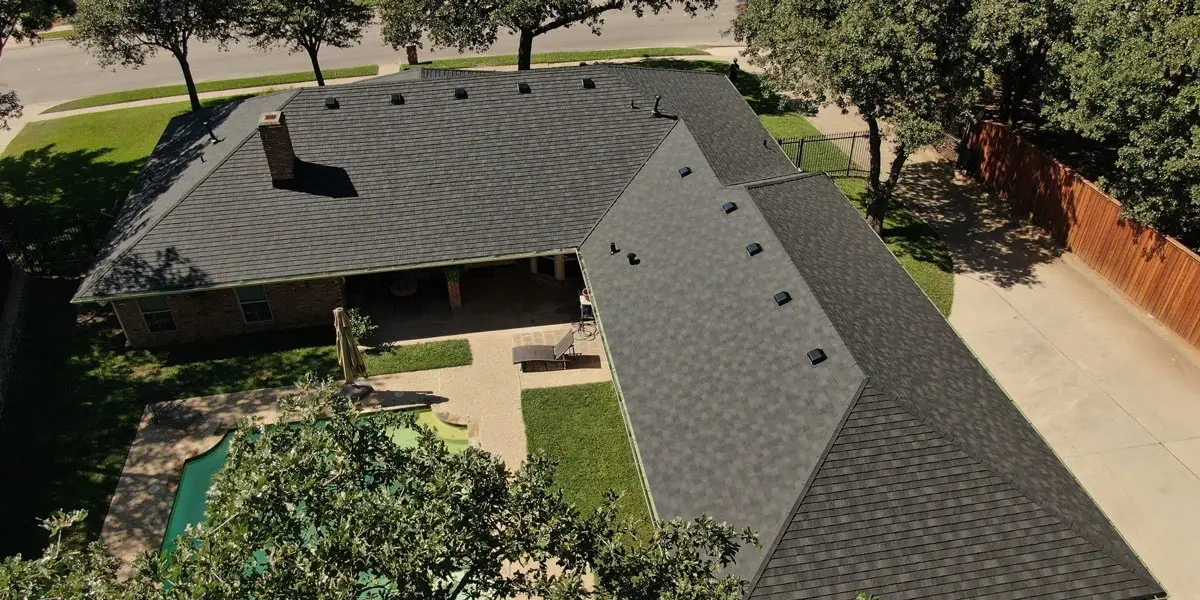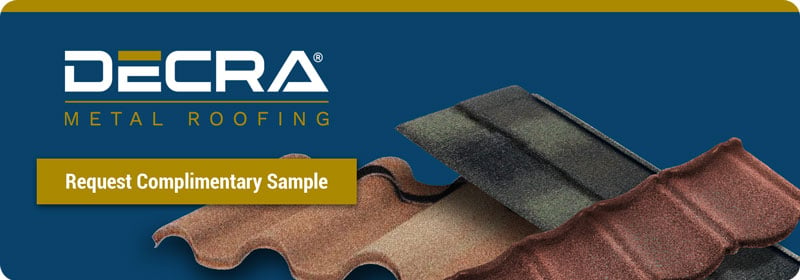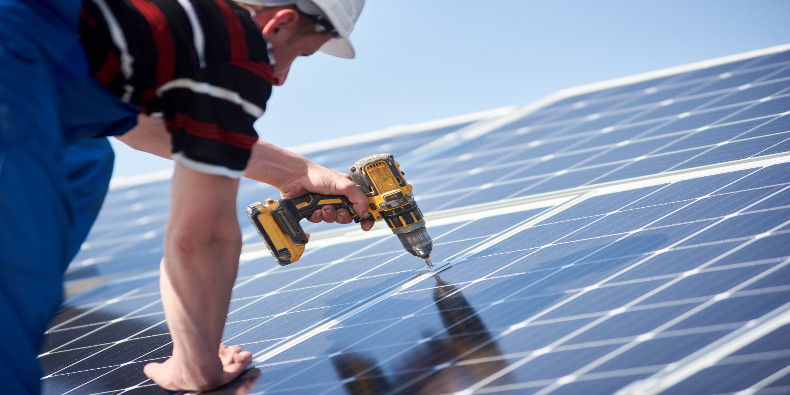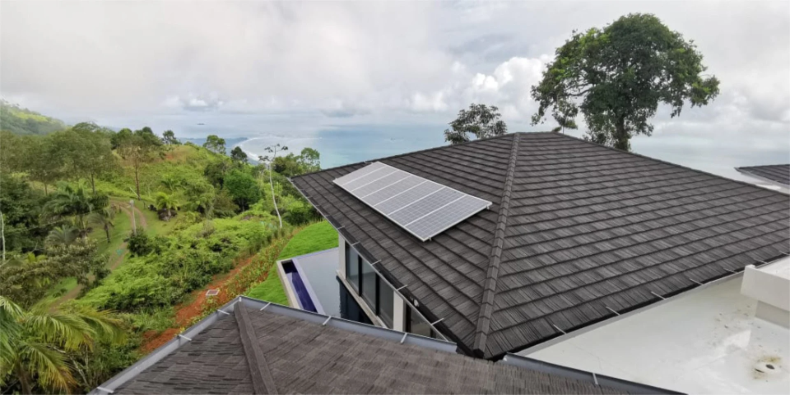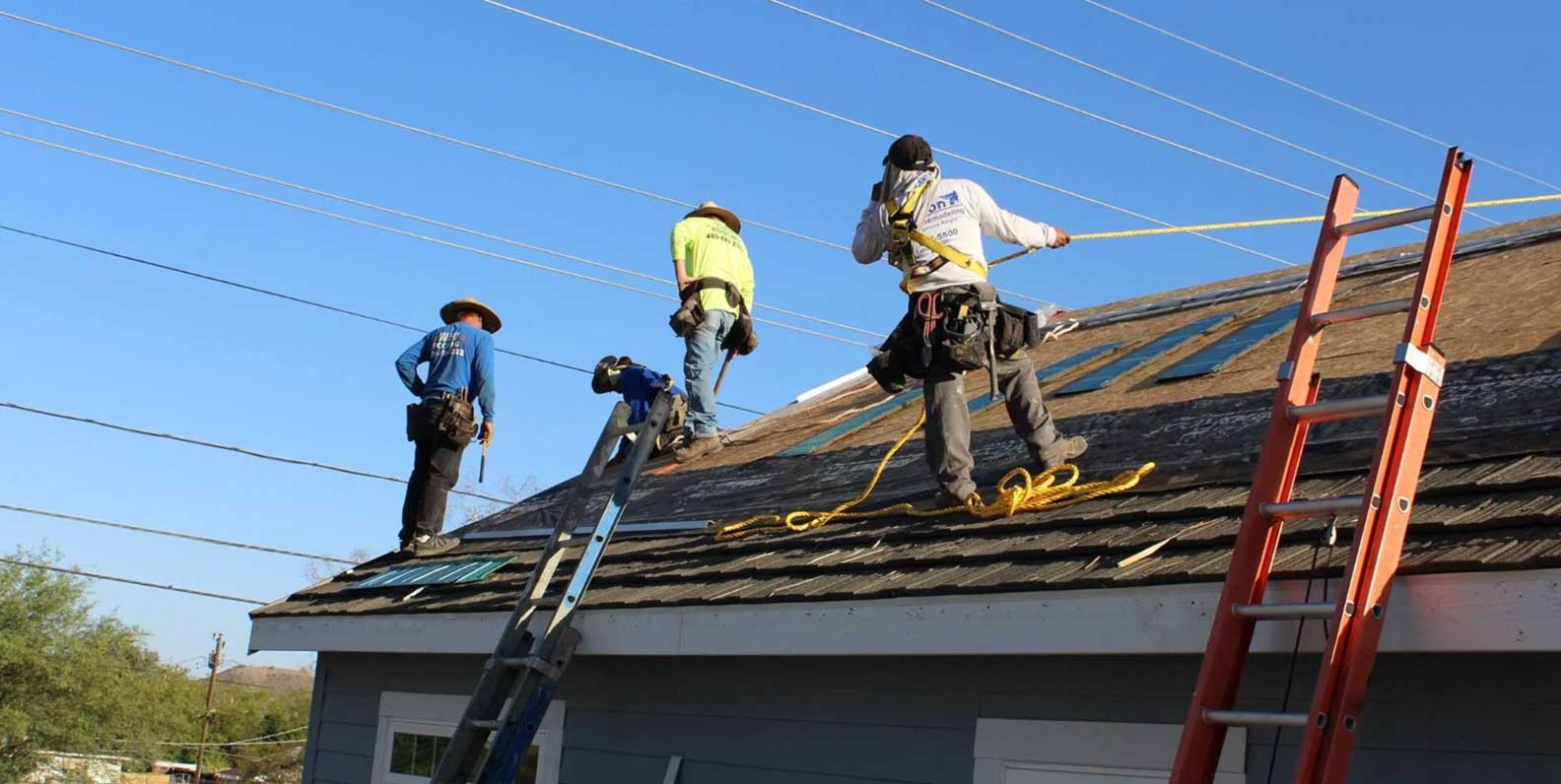Sustainable roofing is more than a hot trend. It’s a smarter, more responsible way to protect your home and the environment. As more homeowners look for durable, energy-efficient and eco-friendly solutions, sustainable roofing has taken center stage.
Curious what makes a roof sustainable? You’re in the right place. In this blog, we’ll explore what defines sustainable roofing, why it’s gaining popularity, and how it compares to traditional options. We’ll break down:
- What makes a roofing material sustainable
- Why sustainable roofing is on the rise
- The pros and cons of various roofing materials
- Why durability matters just as much as sustainability
Spoiler alert: You don’t have to choose between sustainability, strength, and style. With the right material, you can have it all.
What Makes Roofing Sustainable?
There are several characteristics that make roofing sustainable. The first one most people think of is that it should be made from recycled materials.
At the end of its lifespan, sustainable roofing should also be recyclable, whether reused as roofing material or repurposed into something else. For example, some asphalt shingles can be repurposed into pavement, while concrete tiles are sometimes ground up for use in roadway construction.
Other factors that contribute to a roof’s sustainability include:
- Being manufactured with minimal environmental impact
- Helping homeowners and commercial building owners reduce energy consumption
- Supporting other sustainable practices, such as collecting rainwater or growing rooftop gardens
Why Is Sustainable Roofing Important?
Sustainable roofing is, first and foremost, a more environmentally friendly choice. For example, millions of asphalt shingles end up in U.S. landfills each year. Unfortunately, an estimated 11 million tons of recycled material isn’t being reused. Why? A few reasons include:
- Limited access to nearby recycling facilities
- Added costs for roofing contractors and their clients
- Extra time and labor required to recycle asphalt shingles
As a result, asphalt shingles, a petroleum-based product, often wind up in landfills, where they can take centuries to break down. What happens when those landfills are full? And what are the long-term effects on natural ecosystems and the resources we depend on?
In contrast, steel is the most recycled material in North America, making metal roofing a far more sustainable option (something we’ll explore in more detail in the next section).
Another reason sustainable roofing matters? Clients are asking for it. If you’re a roofing contractor, it’s crucial to factor in your customers’ preferences when helping them choose a roofing material.
The number of homeowners who value eco-friendly features is growing. These buyers value sustainability not only for its environmental impact but also for how it supports personal health and long-term costs savings.
Sustainable Roofing Options
Whether you’re choosing sustainable roofing for your own home or guiding a homeowner through a roof replacement, there are several eco-friendly materials worth considering. Here’s a look at some top choices, along with some of their pros and cons.
Wood Shakes
Popular in New England and other regions with historic or coastal homes, wood shakes offer a charming, natural appearance. Because they’re made of plant-based materials, they can often be recycled into products like mulch.
The drawbacks of wood shakes include:
- Limited availability in some regions
- Not suitable for areas with high wildfire risk
- Fewer contractors specialize in wood shake installation
- Shorter lifespan than other roofing materials
- Requires regular maintenance
Cool Roofs
A cool roof is designed to reflect more sunlight and absorb less heat than standard roofing materials. By keeping the surface cooler, these roofs help reduce the amount of heat transferred into the home, especially in warmer climates. This helps to cut down on air conditioning use and energy costs.
Some cool roofs are constructed using white gravel and glue, while others use reflective coatings or materials like metal for greater durability and performance.
Cool roofs are especially important in hot, sunny regions, and in some cases, they’re even required by building codes. For example, California’s Title 24 Building Energy Efficiency Standards mandate cool roofing materials for certain new construction and re-roofing projects in climate zones where heat gain can significantly impact energy consumption.
DECRA Metal Roofing offers cool roof options that meet these standards for solar reflectance and thermal emittance. These stone-coated metal roofs can help reduce cooling costs by up to 25%.
Slate
Slate has a timeless look, is naturally fire resistant, and can be reclaimed or reused in landscaping or other applications. Its long lifespan adds to its sustainability.
Things to consider:
- Extremely heavy
- Limited pool of qualified installers
- Higher upfront cost compared to other materials
Clay and Concrete Tiles
Nontoxic and energy efficient, clay and concrete tiles are popular in regions like Florida and the Southwest where Mediterranean-style homes are common. Both materials are often produced with a reduced carbon footprint and are recyclable at the end of their life.
However, clay and concrete tiles are:
- Heavy and require specialized installation
- Clay tiles can crack under impact (ex: hail)
- Not ideal for all climates and structures
Living Roofs
A living roof, also known as a green roof, is a roof that’s partially or completely covered with vegetation planted over a waterproof membrane. These roofs are growing in popularity, especially in urban settings, because of their environmental and aesthetic benefits.
Benefits include:
- Natural insulation to reduce heating and cooling costs
- Oxygen production and improved air quality
- Rainwater absorption to reduce urban runoff and flooding
- Support for biodiversity, attracting birds, bees, and butterflies
- Extended roof lifespan when properly installed and maintained
As you might expect, these roofs are heavy, which is why they’re more commonly seen on commercial or multi-unit buildings. They also require professional installation and regular maintenance, and may need irrigation in drier climates.
Solar Roofing
Solar roofing uses materials that generate electricity while also functioning as a roof. It’s a forward-thinking solution that provides clean energy directly to the home, all while offering protection from the elements.
This type of roofing is appealing for its long-term energy savings and sustainability. However, it’s still an emerging technology and may not be widely available in all areas.
Keep in mind:
- Higher upfront cost
- Limited access to trained installers
- Still becoming mainstream
Many homeowners choose to install solar panels over existing roofing materials, especially when the full solar roofing systems aren’t accessible or within budget. For long-term performance, the roof underneath needs to be just as durable as the panels themselves. That’s why metal roofing is a popular and practical choice.
Metal Roofing
Metal roofing is one of the most sustainable and durable roofing materials available. It’s highly recyclable, often made with recycled content, and can last two to three times longer than traditional asphalt shingles.
DECRA takes sustainability a step further by meeting LEED (Leadership in Energy and Environmental Design) criteria. Benefits include:
- Reduced energy use for heating and cooling
- Minimal water required during installation
- Lower greenhouse gas emissions
- High recycled content
- Availability in Cool Roof colors
Many homeowners also choose metal roofing as a foundation for solar panel installation, thanks to its strength and longevity. Since metal roofs can last 50+ years, they often outlive the solar panels themselves, eliminating the need to reroof mid-lifespan and protecting both your investment and the environment.
Even better, DECRA can often be installed over existing asphalt shingles, reducing tear-off waste and making your roofing project more sustainable (pending compliance with local building codes).
DECRA Metal Roofing: Sustainable AND Weather Resistant
Sustainability is just one piece of the roofing puzzle. The material you choose also needs to stand up to harsh weather, whether it’s rain, snow, hail, high winds, or even wildfire. The good news? With DECRA you don’t have to choose between sustainability and performance. You get both.
Here are some of the protective benefits that help safeguard your home:
- Impact resistance strong enough to withstand hail and debris that can cause thousands in damage
- Wind uplift protection tested to meet or exceed Miami-Dade-level hurricane wind speeds of 120 miles per hour
- Defense against wind-driven rain, which can seep under shingles and damage roof decking
- Top-tier fire resistance, earning the highest UL rating for protection against fires originating outside the home
- Lightweight design that prevents sagging under heavy snow and features a hollow core to help reduce ice damming
In addition, homeowners with DECRA often enjoy:
- Insurance discounts, especially valuable as more policies are being canceled or premiums increase
- A boost in property value up to 6% for both sellers and equity-focused homeowners
When you put all of that together, it’s easy to see why so many homeowners are turning to DECRA for long-term protection and peace of mind.
See What a Sustainable Roof Looks Like
Thinking about a DECRA Metal Roof for your home? Request a complimentary sample to explore the textures, colors, and profiles that make DECRA a standout choice for sustainable roofing. Designed to mimic the look of traditional materials, like shingles, shakes, and tiles, DECRA gives you the beauty you want with the durability and eco-conscious design you need.

